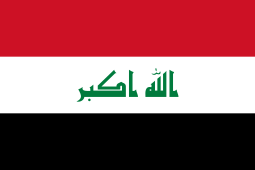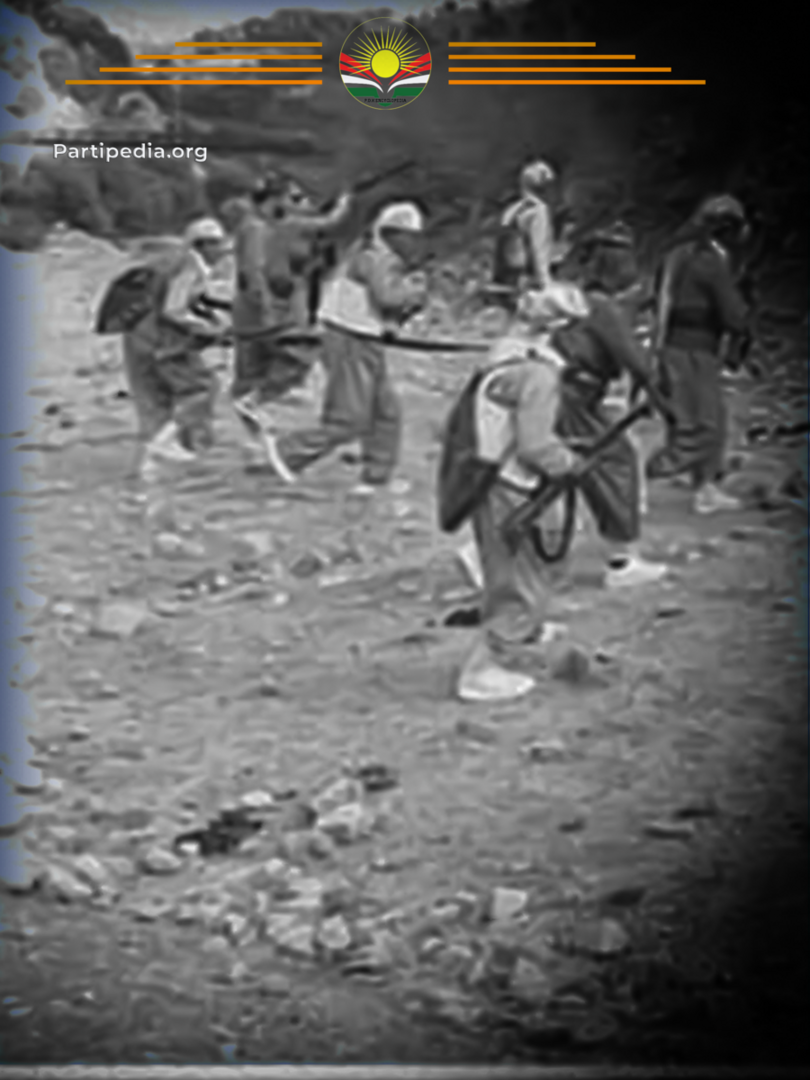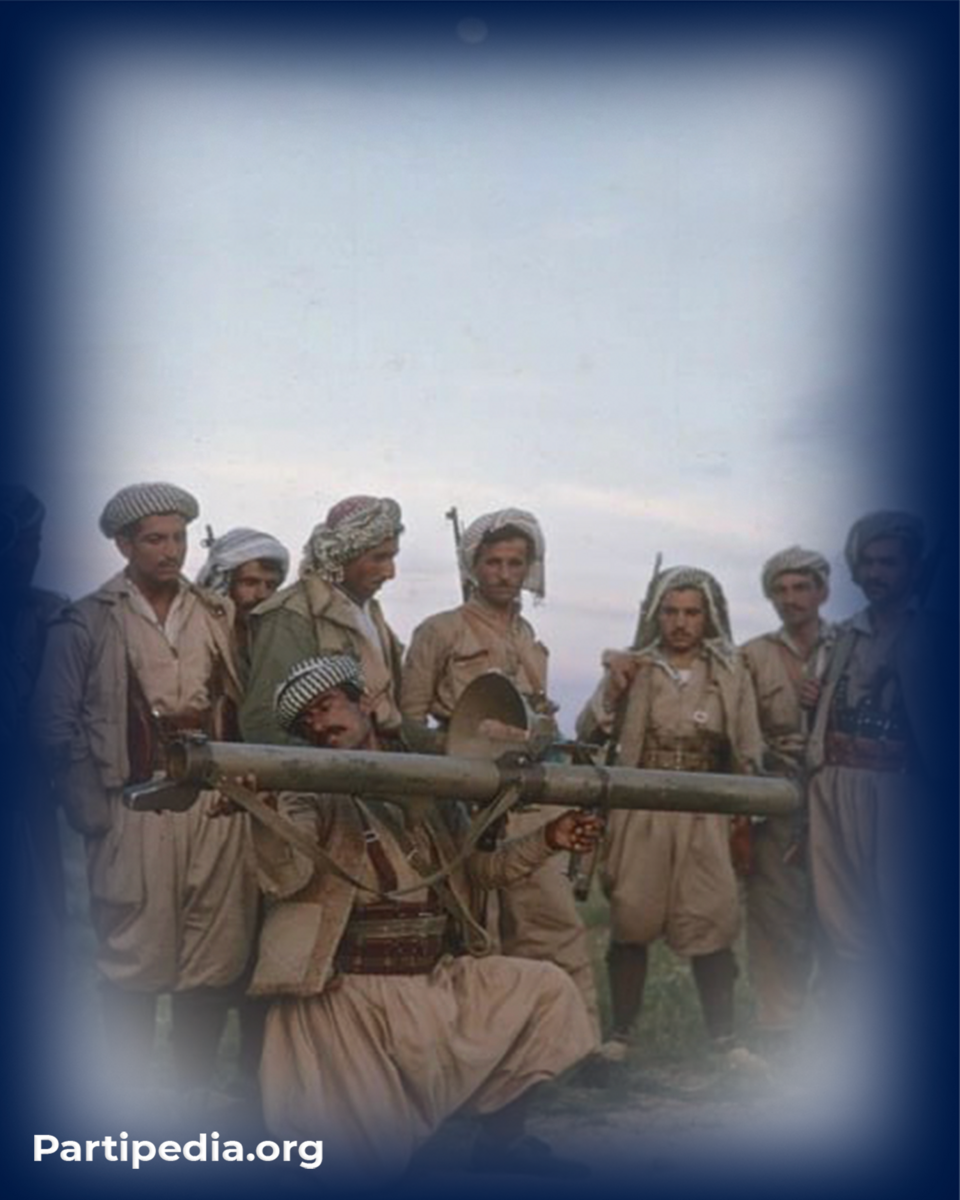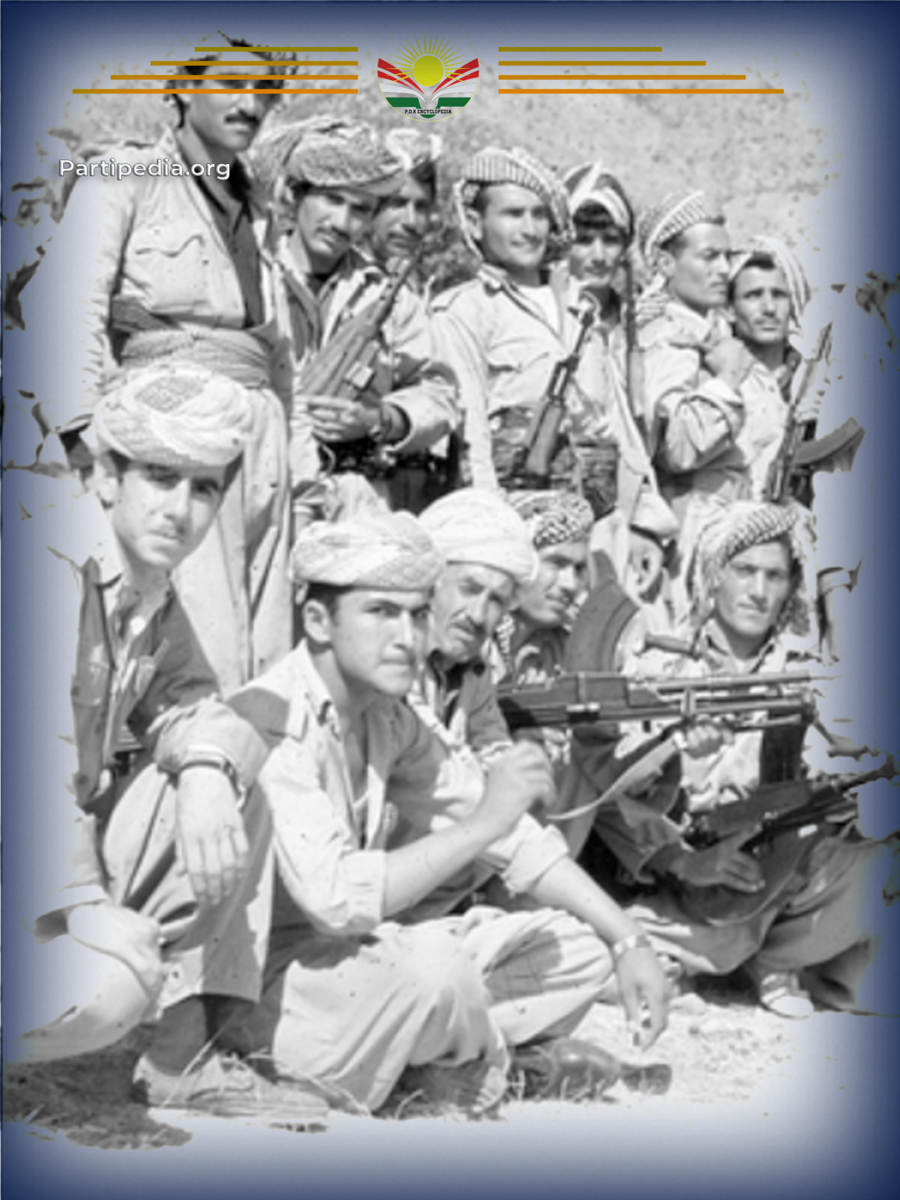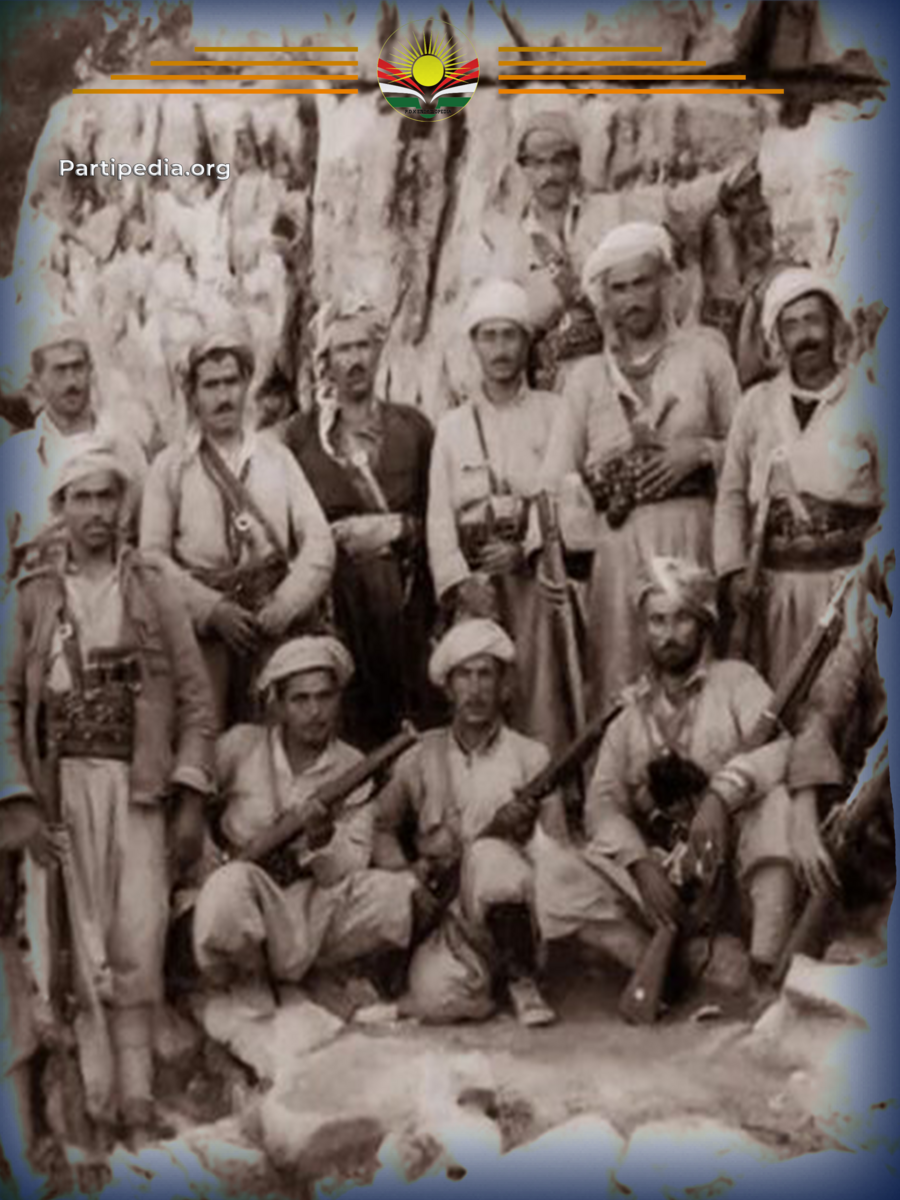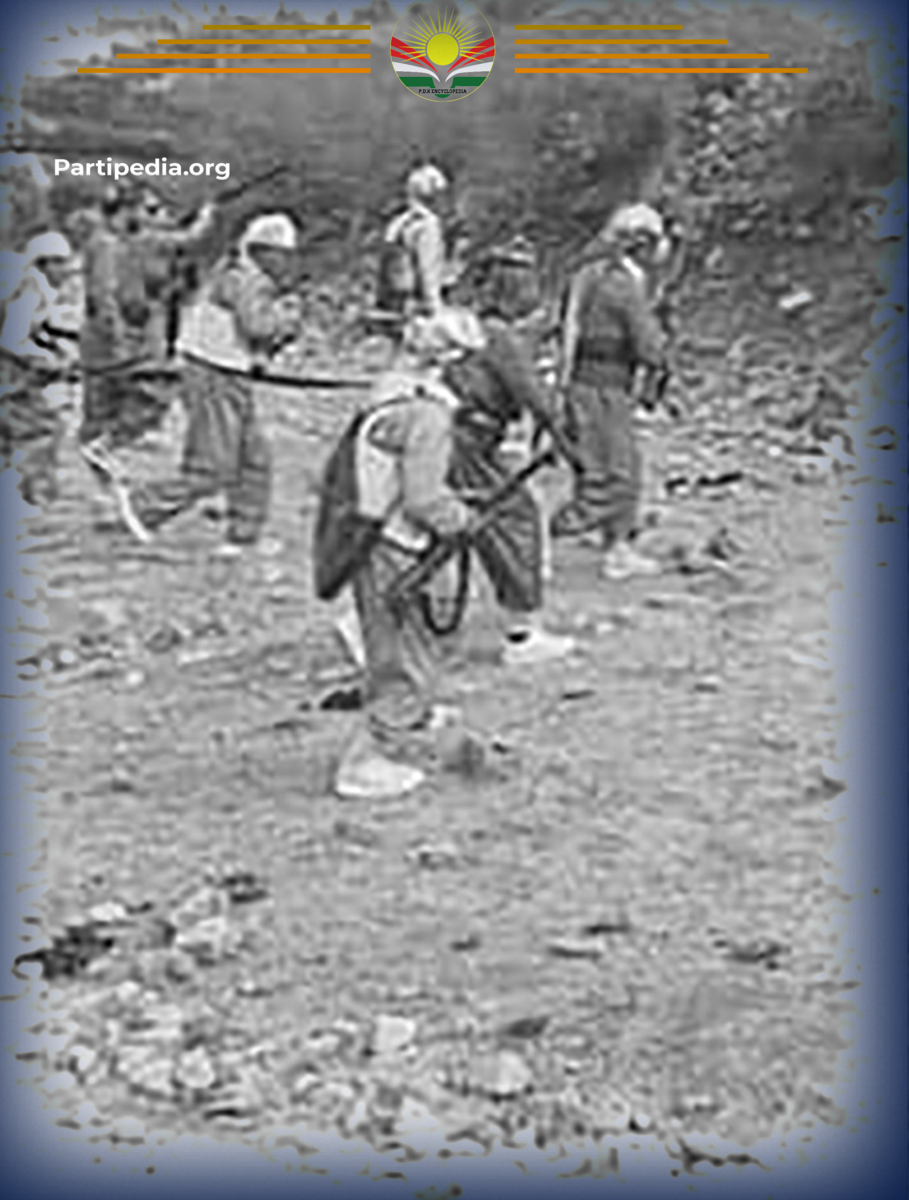From the very beginning of the Aylul Revolution, Abdul Karim Qasim confidently proclaimed in a press conference that he had destroyed the revolution. However, the initial victory of the Kurdish revolutionaries in the Badinan region not only refuted all the government’s propaganda and rumors but also forced the authorities to increasingly rely on jash forces and mercenaries from the region. This dependency arose because the Iraqi army lacked familiarity with the challenging terrain, roads, and hiking paths of Kurdistan's rugged mountains. Moreover, the army was ill-prepared for guerrilla warfare, leading to low morale and inefficiency among its ranks.
Additionally, the Rekani jashes had fled to Turkey, only to be handed back to the Iraqi authorities by the Turkish government. These mercenaries were sent through the Masi stream to return to Mosul with the intent of creating a buffer between the Kurdish revolutionaries and the Kurdish villages of North Kurdistan, whose residents were overwhelmingly supportive of the revolution. For instance, a Peshmerga who participated in the events of the time documented that Kurdish fighters from Turkey arrived in the area to support Barzani and the revolution. Their commander, Sadiq Marinos, launched a fierce attack on the jashes, delivering a devastating blow to their forces.
The government was determined to capture Geli Zawita at all costs and deployed a large number of army personnel, police forces, and jashes to the area. The revolutionary front was organized into two key sections. On the eastern front, leadership was entrusted to commanders such as Mohammed Amin Mirkhan, Haji Berokhi, Mullah Shne Bedaruni, Hars Bedaruni, and Hadi Hasko, with support from Huso Mirkhan Zhazhuki. On the western front, commanders included Asad Khoshaw, Isa Suwar, Ali Khalil, Huso Mirkhan, Omar Agha Dolamari, and Sulaiman Mirkhan. The Peshmerga forces were further strengthened by fighters from Badinan's Kurdish tribes, including Mazuri Zheri, Barwari Zheri, Doski Zheri, Guli, Sindi, and Nerwayi, whose participation bolstered the revolution’s ranks.
To execute their plan, government forces—comprising the Second Command of Duhok, along with jash and police units—attempted to encircle the area using heavy weaponry, including tanks, armored vehicles, and artillery. Their forces divided into two groups, with one advancing directly toward Zawita village and the other, primarily composed of jashes, moving through the villages of Eminke, Bablo, Sirk, and Tenirka before regrouping in Zawita. After shelling the area, they launched a large-scale assault. However, Barzani's strategy to divert the army’s focus toward Sarsang proved effective. Meanwhile, some jashes remained stationed on the Zawita road.
By December 5-6, 1961, government forces reached Zawita, only to face a relentless counterattack by the Peshmerga, who surrounded and defeated them. The government forces ultimately retreated, driving their jashes back toward Amedi. Following this victory, Mullah Mustafa Barzani resolved to liberate Sarsang, a move that significantly boosted the morale of the Peshmerga. On December 10, the Peshmerga forces successfully liberated Sarsang without resistance, seizing control of the police station and securing the strategically critical Zawita Valley. Sarsang, an essential gateway to Geli Zawita, held great strategic importance as it overlooked Duhok and lay close to Barzani's headquarters in Gar Baraske village. Additionally, it was situated near the Qadsh area, where the revolutionaries had established a hospital in Inishke cave to safeguard the wounded and protect the facility from enemy shelling.
The outcomes of this battle were profound. The liberation of Sarsang, the defeat of the Rekani jashes, and the revolution’s achievements within just three months of its outbreak resonated deeply across Kurdistan. The Kurdish people began to believe that the harsh realities of their lives could indeed be transformed through the sacrifices of the Peshmerga, whose courage and determination had triumphed over the state’s superior military forces. These victories also forced the government to recognize the revolutionaries’ resilience, strategic acumen, and unwavering commitment to their cause.
As the series of battles unfolded, the government intensified its efforts to regain control of the region, mobilizing additional forces to reclaim its positions. However, the decisive defeat in the Geli Zawita War, followed by their failure in the Lomana Battle, dealt a severe blow to government forces. Ultimately, these setbacks compelled the regime to resort to negotiations, acknowledging the formidable strength and resolve of the Kurdish revolutionaries.
Source:
١- عبدالفتاح علي البوتاني، منطقة بادينان 1925 – 1970، ج 2، مطبعة جامعة صلاح الدين، اربيل، ٢٠١٧.
٢- هاوکار کەریم حمە شریف، شۆڕشى ئەیلوول، (چاپخانەى زانکۆى سەلاحەددین- هەولێر- ٢٠١٢).
٣- مەسعود بارزانى، بارزانى و بزووتنەوەى ڕزگاریخوازى کورد، بەرگى سێیەم، بەشى یەکەم، (چاپخانەى وەزارەتى پەروەردە- 2004).
٤- رجب جمیل حبیب، ئامێدى (العمادیة) 1921 – 1975، مطبعة هەوار، دهۆک، 2012.
٥- شیرزاد زکریا محمد، الحرکة القومیة الکردیة في كوردستان العراق 8 شباط 1963 – 17 تموز 1968، (دار سپيريز للطباعة والنشر- دهوك- 2006).
٦- حاجى میرخان دۆڵەمەرى، گەڕان بە دواى دادپەروەرییدا دیوێکى ترى مێژووی شۆڕش لە کوردستان دا 1943 – 1991، بەرگى یەکەم، (بێ شوێنى چاپ- 2021)
٧- هوژین مسعود سەرنى، شورەشا ئیلونێ ل دەڤەرا بەهدینان 1961 – 1975، سەنتەرى زاخۆ بۆ ڤەکۆلینێن کوردى، 2018.
٨- غازى عادل گەردى، پێشمەرگەیەک لە خزمەت ڕێبازى بارزانی دا... حاجى بێڕۆخى 1916 – 1975، بەرگى یەکەم، تورکیا.

